|
Naval
Aircraft Factory in World War Two
Philadelphia, PA
1917-1956
This page updated 5-11-2025.
An American Auto
Industry in World War Two Special Edition
The Naval Aircraft Factory was
formed along the banks of the Delaware River on League Island in south Philadelphia.
It was located east of the Philadelphia Shipyard. The U.S. Navy
established the Naval Factory because its requirements for aircraft in
World War One were different and the quantities required considerably
smaller than the U.S. Army. The aircraft manufacturers of the era
were more interested in the large Army contracts than making a few aircraft for the Navy. Also,
during World War One, the U.S. Navy primarily used seaplanes. The
era of aircraft carrier warfare was still 25 years away.
However, once World War One ended and military
aircraft sales to the military fell off, the Naval Aircraft Factory
became a target for aircraft manufacturers who saw the Naval Aircraft
Factory as taking business away from them. It survived attempts to
have aircraft it was making done by private companies until the end of
World War Two when it stopped producing aircraft. In 1942 it was
renamed the Naval Air Material Center. In 1943 it had a peak
employment of 13,400 workers.
While the building of aircraft was the primary
function of the Naval Aircraft Factory, it was also involved in Naval
aviation research and development. It also produced engines and
developed shipboard catapults for Naval Aviation during World War Two.
In the three decades after World War Two the various departments and
laboratories at the former Naval Aircraft Factory were either closed or
moved to other naval research locations. The last one left in 1974
and the land and buildings were given to the Philadelphia Shipyard.
When the Shipyard closed in 1995, some of the property was repurposed
for private use. However, the Naval Surface Warfare Center still
occupies several buildings used by the Naval Aircraft Factory.
Naval Aircraft Factory World War Two
Products:
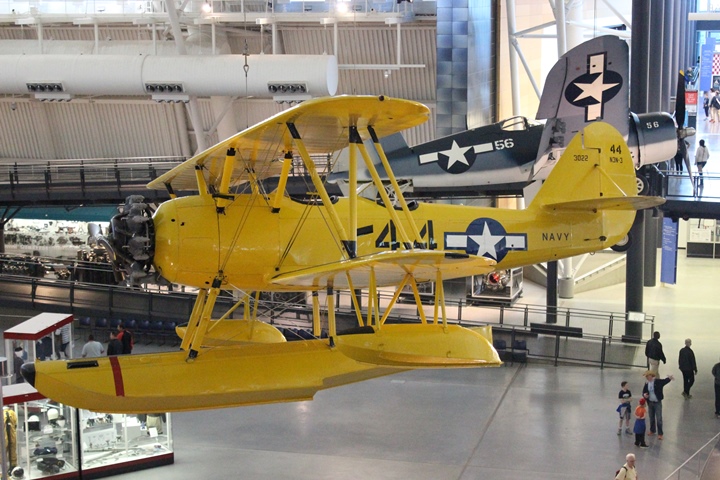
The N3N-3 primary trainer was the Naval
Aircraft Factory's most important product of World War Two. While
the F4F Wildcat, F6F Hellcat, and F4U Corsair are credited with sweeping
the Imperial Japanese Navy's aircraft from the skies of the Central
Pacific during the war, the pilots had to learn to fly at NAS Pensacola
in an N3N-3 before they could even begin thinking about flying fighters.
The "Yellow Peril," as the N3N-3 was known to the fledging pilots,
taught them how to fly. This made the N3N-3 the most important
U.S. Navy aircraft of World War Two. Fighter pilots couldn't shoot
down Japanese aircraft until they mastered the basics of flying in the
N3N-3.
During the same time period the SBD
Dauntlesses and TBF/TBM Avengers were sinking Japanese navy and merchant
ships until the point they started running out of targets. These
pilots also learned how to fly in a Naval Aircraft Factory N3N-3.
During World War Two, the U.S. Navy had a
large fleet of seaplanes like the PBY Catalina, PBM Mariner, and OS2U
Kingfisher that performed all sorts of missions during the war.
The pilots learned to fly in a N3N-3 with wheels at Pensacola, then
learned to take off and land in the water in an N3N-3 like this one on
display at the Udvar-Hazy Center of the National Air and Space Museum.
It is serial number
3022.
The Naval Aircraft Factory build 816 N3N-3s
during 1940-1942. These trainers were built and ready to train all
of the new Naval Aviators that accelerated with the entry of the U.S.
into World War Two in December 1941. Naval Aircraft Factory N3N-3s
were instrumental in helping to win World War Two. Author's photo.
|
Table 1 - Naval
Aircraft Factory World War Two
Products 1940-1946 |
| Year |
Type |
Quantity |
| 1940 |
XN3N-3 |
1 |
| 1940-1942 |
N3N-3 |
816 |
| 1941 |
XN5N-1 |
1 |
| 1940-1942 |
SBN-1 |
30 |
| 1942 |
OS2N-1 |
300 |
| 1942-1945 |
PBN-1 |
156 |
| 1942-1943 |
XTDN-1 |
4 |
| 1942-1943 |
TDN-1 |
100 |
| 1944 |
XLRN-1 |
2 |
| 1944-1945 |
Gorgon II-A |
21 |
| 1945 |
Gorgon II-B |
4 |
| 1946 |
Gorgon II-C |
100 |
| 1944-1945 |
Gorgon III-A |
34 |
| 1945 |
Gorgon III-B |
16 |
| 1945 |
Gorgon III-C |
20 |
| 1945-1946 |
TD2N-1 |
19 |
| 1945-1946 |
Little Joe |
15 |
| Total |
|
1,639 |
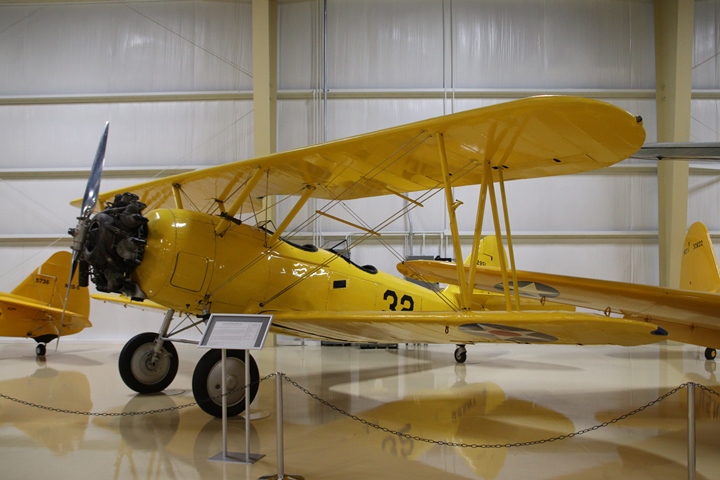
This is N3N-3 number
2951 and is on display at the Kalamazoo Air Zoo Aviation Museum.
Author's photo.
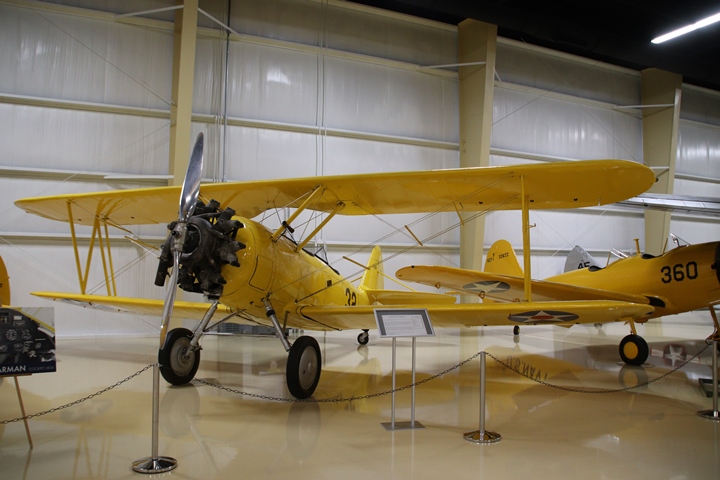
Author's photo.
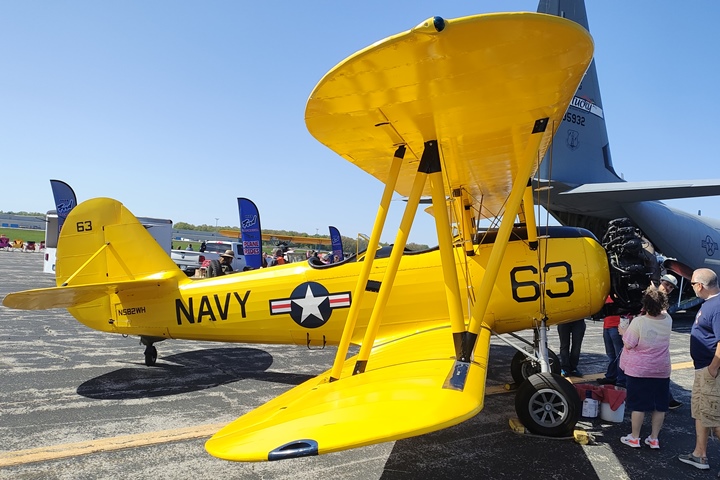
This 1940 NPN-3 was on display at the 2025
Toledo Airshow. Author's photo added 5-11-2025.
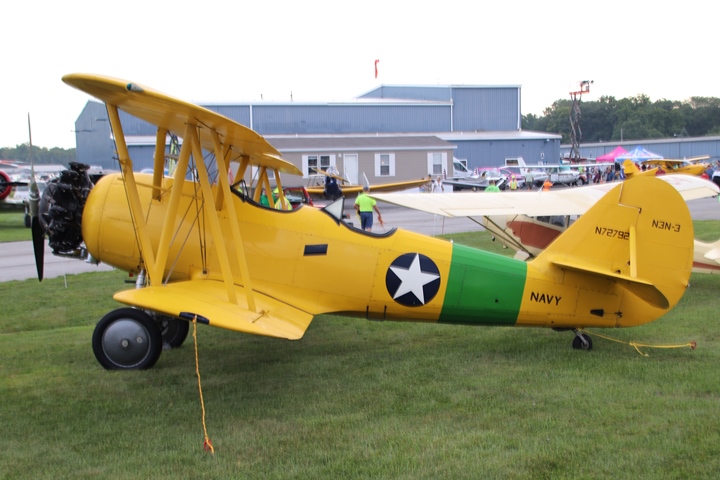
This privately owned Naval Aircraft
Factory-built N3N-3 was on display at the 2022 Marion, IN
Fly-in/Cruise-in. Author's photo added 9-4-2022.
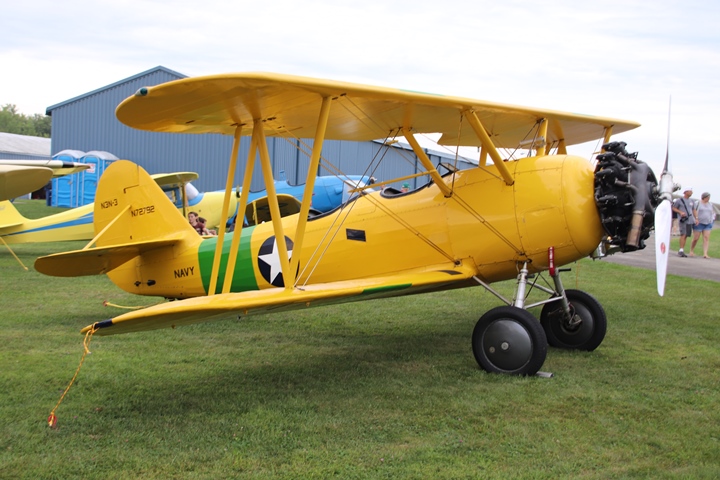
Author's photo added 9-4-2022.
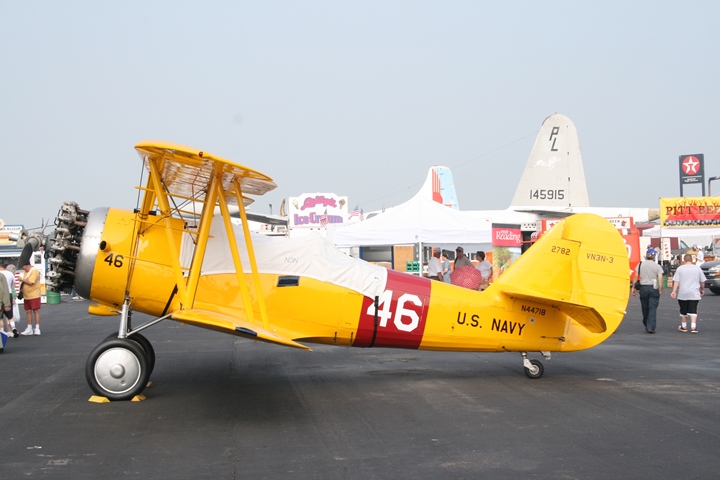
This is N3N-3 serial number 2782 which is
always on display at the Mid-Atlantic Air Museum's World War Two
Weekend. Author's photo.
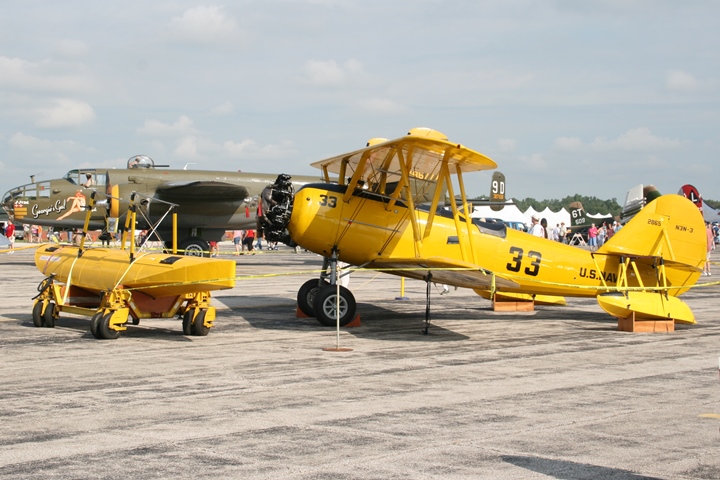
N3N-3 number 2865 was on display at the 2013
Thunder Over Michigan Airshow. The display included the floats
used to convert it to a seaplane. Author's photo.
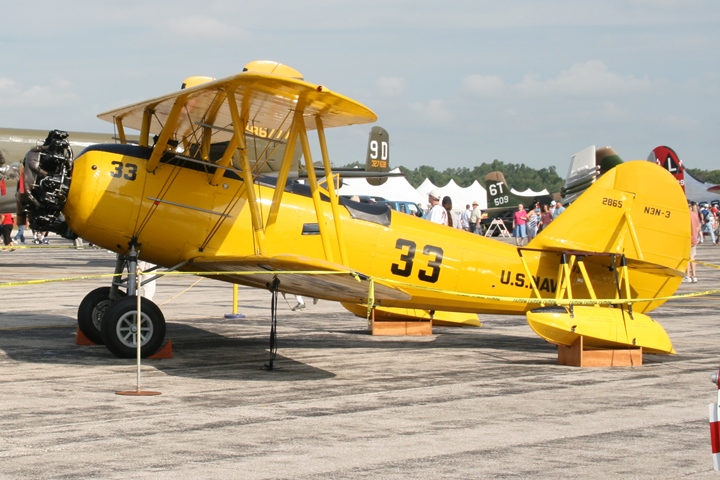
Author's photo.
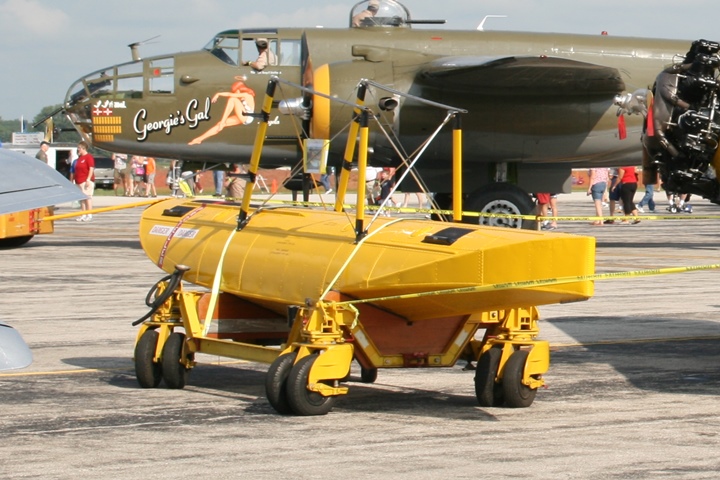
Author's photo.
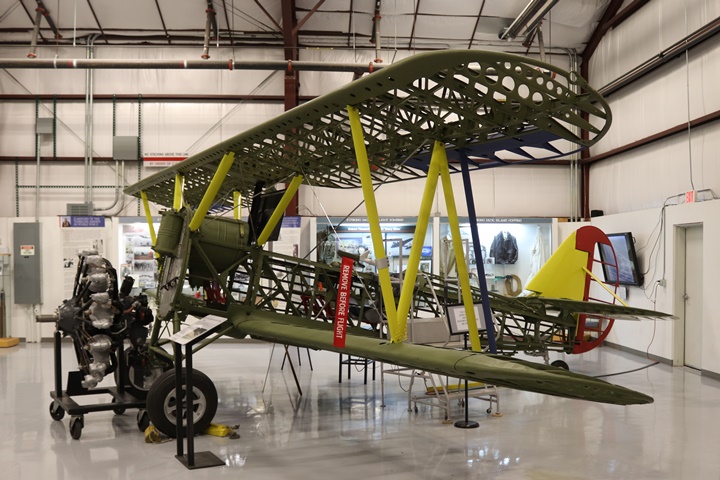
This is a really cool display of a Naval
Aircraft Factory N3N-3 framework. This is part of the collection
at the National Museum of WWII Aircraft in Colorado Springs, CO.
Author's photo.
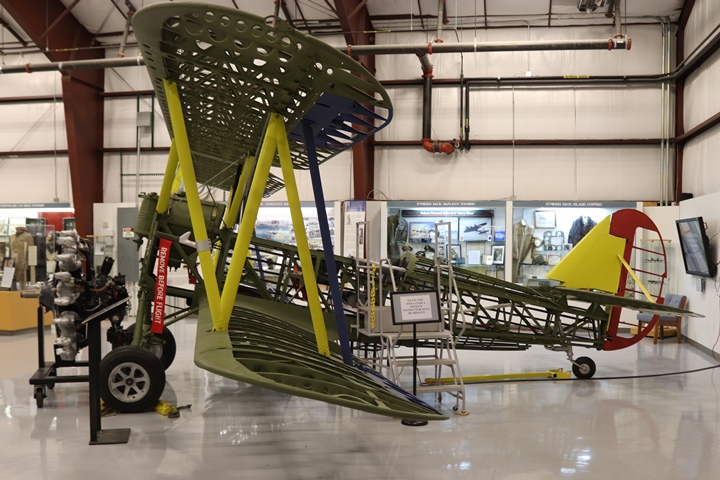
Author's photo.
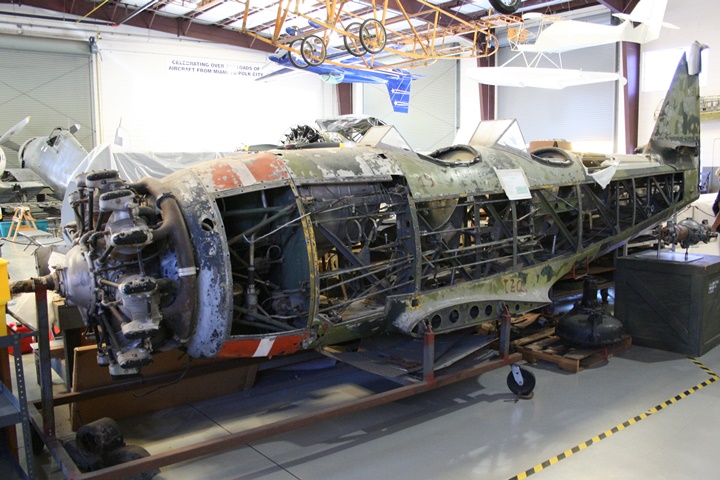
This N3N-3 is part of the Kermit Week's
collection at the former Fantasy of Flight in Polk City, FL.
Author's photo.
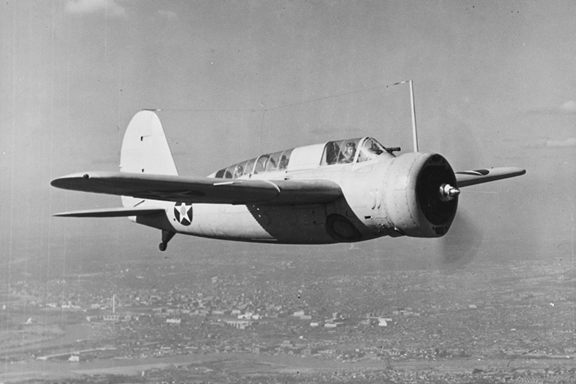
At the same time as the Naval Aircraft
Factory was building the important N3N-3, it was also building 30
Brewster SBN-1s scout-bombers under license. They were used for
training purposes only. Official U.S. Navy photo.
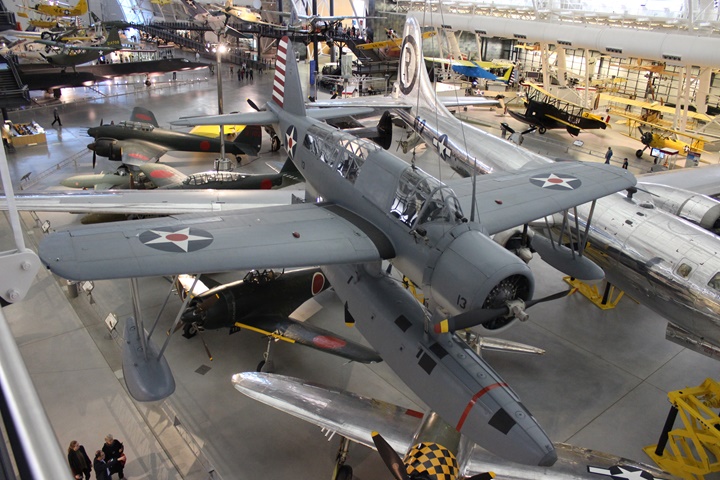
The next big project after the
construction of the N3N-3 and the SNV-1 was the building of 300 OS2N-1s.
These were license built versions of the Vought OS2U-1 Kingfisher
observation aircraft. The U.S. Navy had the 300 units transferred
to the Naval Aircraft Factory so Vought could focus all of its resources
on the building of the F4U. There are no known OS2Ns remaining.
This OS2U-3 on display at the Udvar-Hazy Center of the National
Air and Space Museum is similar to the OS2N. Author's photo.
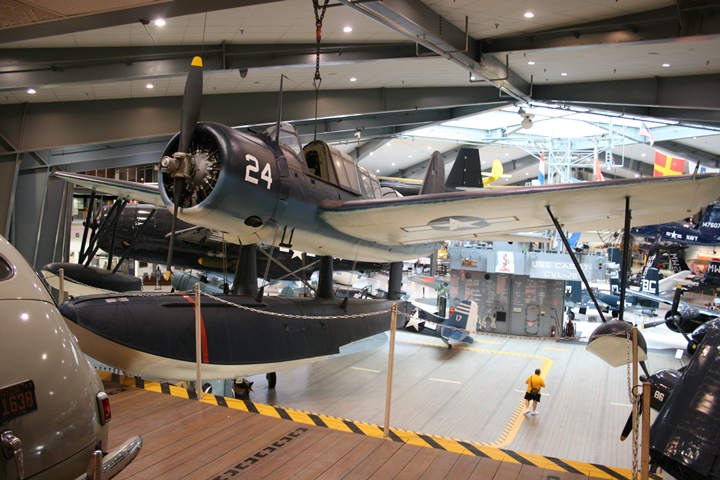
This OS2U-3 is on display at the National
Aviation Museum in Pensacola, FL. OS2U-3s are very similar to
the Navy Aircraft Factory's OS2N-2s except for armament, armor, and
engine. Author's photo.
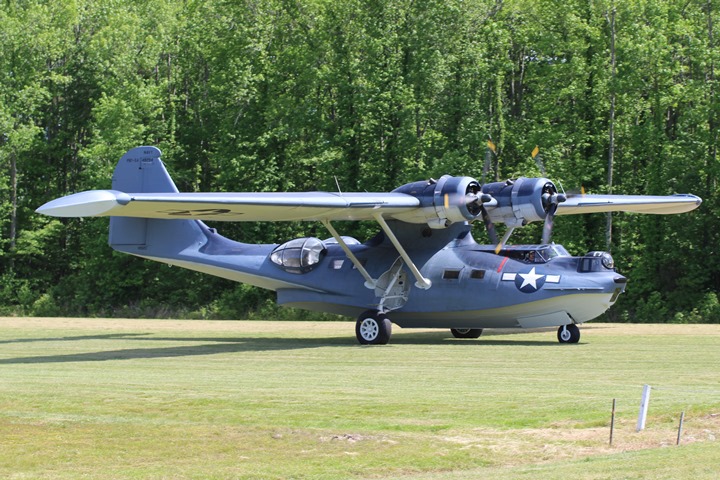
The last aircraft the Naval Aircraft Factory
built was a slightly longer version of the Consolidated PBY-5 shown here
at the Military Aviation Museum at Virginia Beach, VA. This
allowed the PBN-1 to carry a larger payload and have more range than the
PBY-5. The Naval Aircraft Factory built
156 PBN-1s, most of which were all sent to the Soviet Union under
Lend-Lease. Author's photo.
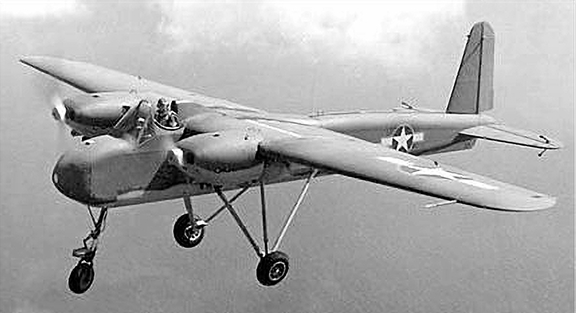
The Naval Aircraft Factory's TDN-1 drone was
used for testing, evaluation, and target practice. The design was
considered by the U.S. Navy to be too complicated to operate in combat conditions. Official U.S. Navy photo.
The Naval Aircraft Factory also built several
different types of Gorgon series missiles which had different design
configurations and jet engines.
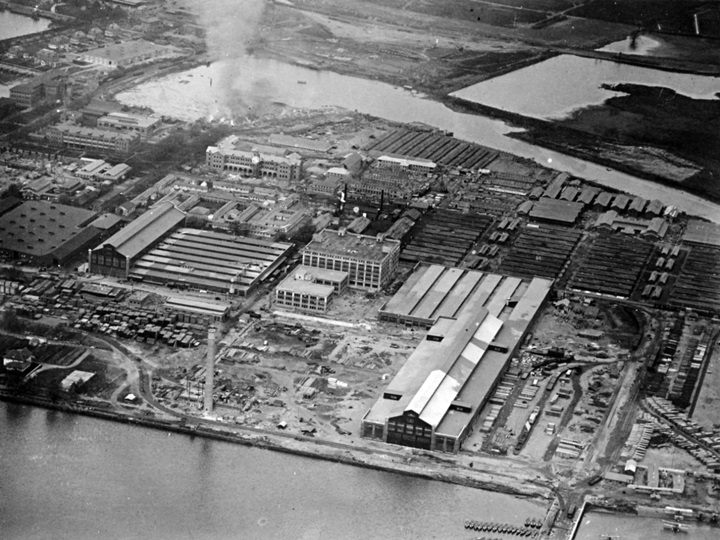
The Naval Aircraft Factory in 1918.
The high-bay building next to the Delaware River still exists and is
shown in the second Google Satellite Image below as Building 77 High.
Photo courtesy of the National Museum of the U.S. Navy.
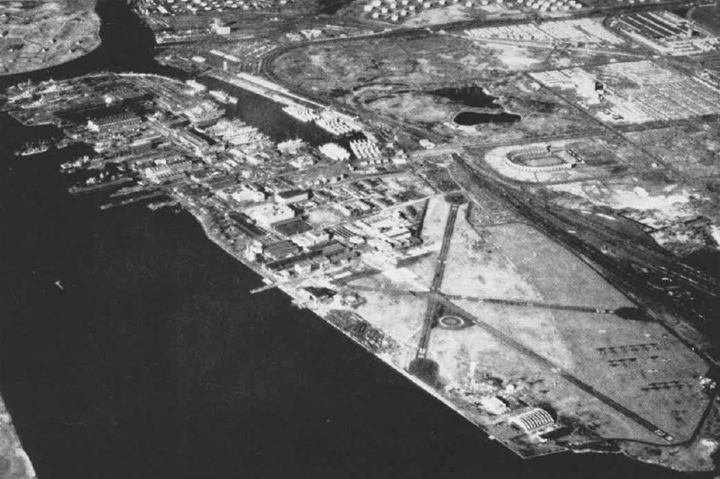
Mustin Field Naval Air Facility was added
for the testing and operation of land based aircraft in 1926. It
was closed in 1963. U.S. Navy photo.
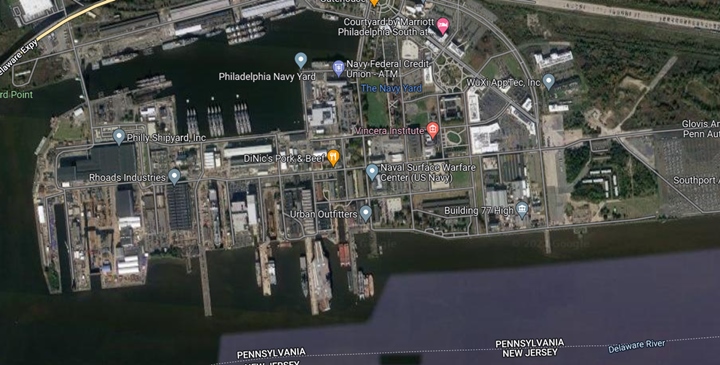
This shows the totality of the former U.S. Navy
complex as it is today. Google Satellite image.
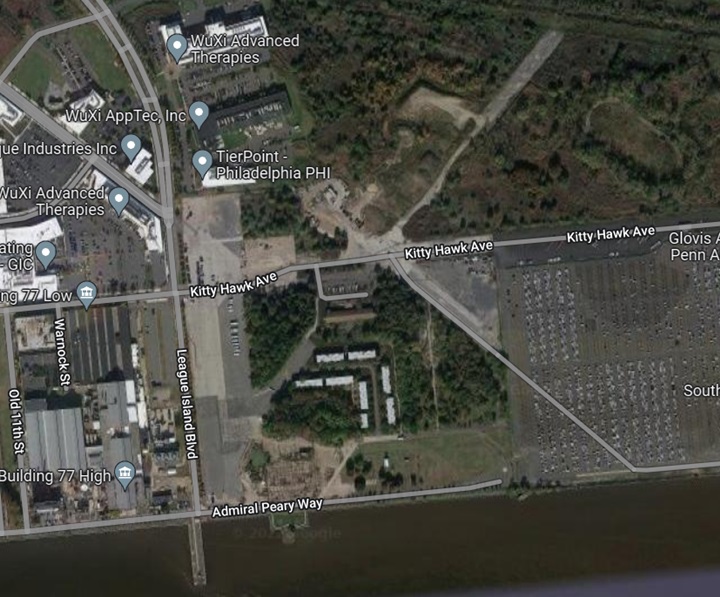
This enlarged image shows some of the
buildings that still exist from the former Navy Air Factory in the lower
left of the photo. It also shows where the former runways for the Mustin Naval Air Facility were. Google Satellite image.
|





















